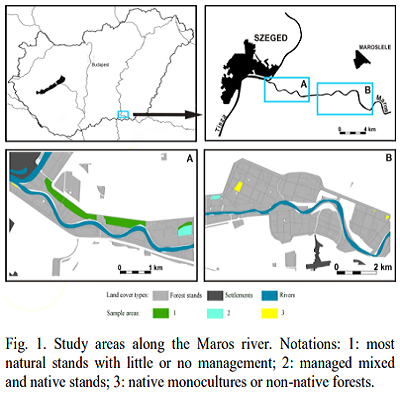Model-based assessment of the carbon storage potential of different types of forests is an important task in the context of climate change and green infrastructure development goals. In our paper, we present the results of the calculations aimed at comparing carbon sequestration processes of floodplain forests with different ages and management intensities in the active floodplain of the Maros river (South East Hungary). These types of assessments can help in resolving the complex environmental management issues of these areas, characterized mainly by the conflicting interests of the forestry, water management and nature conservation sectors. The work was carried out using the CO2Fix3.2 model, based on the field database of a forest reserve and the forest inventory of the area. The main forest types are native and non-native willow-poplar stands, managed and non-managed hardwood forests (with pedunculate oak and elm species) and stands of invasive species. The results highlight the importance of managed forests with long rotation cycle and old-growth unmanaged forests from the point of view of carbon sequestration. They also draw attention to the necessity of incorporating these ecosystem services in the planning processes for better environmental decision-making.
Az erdőrezervátum állományából 3 mintaterületen készült faállomány felmérés.
